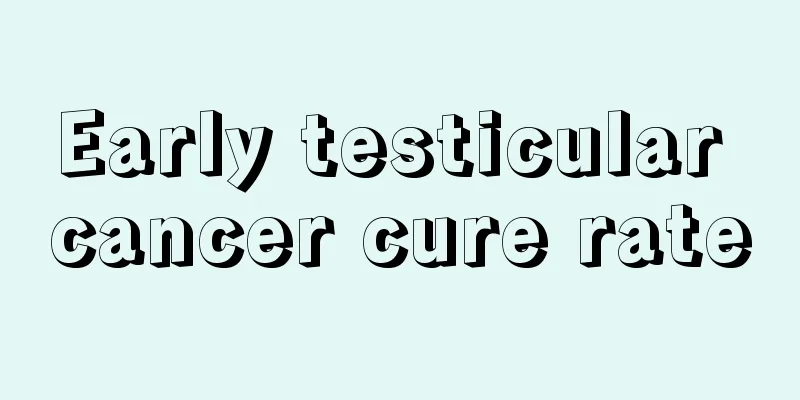Early testicular cancer cure rate

|
What is the cure rate of testicular cancer? Testicular cancer can be cured. And the cure rate is high, provided that it is treated early. Testicular cancer progresses slowly and is currently the malignant solid tumor with the highest cure rate. We all know that the cure rate of testicular cancer has a lot to do with the treatment method chosen, so let's take a look at what treatment methods are available for testicular cancer? 1. Surgical treatment of testicular cancer Since the pathology of testicular tumors is extremely complex, there is no consensus on the treatment methods. However, no matter what type of testicular tumor, orchiectomy should be performed first, and further treatment will be determined based on the results of pathological examination. Common surgical resections include orchiectomy and retroperitoneal lymph node dissection. 2. Radiotherapy for testicular cancer stage I and IIa (maximum diameter of retroperitoneal metastatic lymph nodes less than 2 cm) can be treated with radiotherapy alone, and stage IIb can be treated with a combination of radiotherapy and surgery. Radiotherapy has similar efficacy to retroperitoneal lymph node dissection, but has less damage to sexual function. Combined treatment with radiotherapy and surgery may cause more damage to sexual function, so currently chemotherapy and surgery are more advocated, and combined treatment with radiotherapy and surgery is not advocated. No preventive irradiation of the mediastinum and supraclavicular region is performed in clinical stage II. 3. Testicular cancer chemotherapy Combination chemotherapy with DDP as the main treatment for disseminated testicular germ cell carcinoma has a complete remission rate of 80%. For those with incomplete remission, rescue chemotherapy is used. Thirty percent of patients can still achieve complete remission; ninety percent of complete remission patients can survive long-term without cancer. If the serum marker level rises again, or the residual mass increases, salvage chemotherapy will be performed. Salvage chemotherapy usually uses DDP+ a combination of drugs that have not been used in the first chemotherapy. VIP and VAB-6 are currently commonly used regimens. When treating the disease, you need to avoid eating foods that are not good for the disease, such as leeks, chrysanthemums, coriander, mustard, onions, etc. Such foods are irritating foods and are not good for the disease. |
<<: What to do if you have recurrent testicular cancer
>>: Does testicular cancer liver metastasis have a high cure rate?
Recommend
What are the symptoms of abdominal lymph node inflammation
Everyone knows that lymph is part of the human im...
What should I do if my facial expression is stiff
I believe that many people are prone to having st...
Can surgery be performed on stage 4 gastric cancer?
If the patient is in good general condition and h...
How do rice weevils grow
In our lives, if we buy too much rice and cannot ...
Recipe for soaking dodder in wine
Everyone should know that Cuscuta is a very preci...
What are the dangers of chronic lung cancer
The incidence of lung cancer has been increasing ...
Filter coffee
Many people love drinking coffee, especially when...
Can wrist synovitis be cured?
Wrist synovitis is a common synovitis in daily li...
Why does my right side of the stomach hurt when I walk?
Perhaps everyone has had this feeling: pain on th...
What are the precautions for commonly used drugs for respiratory diseases
Although society is constantly progressing, peopl...
What are the causes of hepatocellular carcinoma?
Hepatocellular carcinoma cancer cells are arrange...
A brief analysis of the manifestations of osteosarcoma in women
The most common symptom of osteosarcoma patients ...
30 What to do if your facial skin is sagging
When people reach a certain age, the skin on thei...
Method of removing formaldehyde with vinegar
Vinegar is a very common thing in people's li...
What are the dangers of scratch disease
Scratch disease, also known as skin scratch disea...









